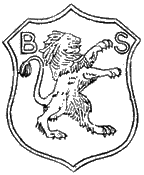The British School, Punta Arenas
"The Southton" Magazine, December 1946
"The Southton" Magazine, December 1946
 the closure
of St. James' College in 1941, the political imperatives of wartime generated
support from the British Council for a new, non-denominational British school.
Preparations began in 1942, and G. J. Butland arrived the following January
as the new headmaster. The first four years saw many improvements and innovations,
intended to establish a new standard of educational excellence.
the closure
of St. James' College in 1941, the political imperatives of wartime generated
support from the British Council for a new, non-denominational British school.
Preparations began in 1942, and G. J. Butland arrived the following January
as the new headmaster. The first four years saw many improvements and innovations,
intended to establish a new standard of educational excellence.The first School Magazine (published at the end of 1946) was a compilation of four years' activities, and it is an excellent piece of work. Its hundred-or-so pages include all major school events, lists of examination results and sports prizes, numerous pupil essays (3 appear below), bios of the 8 senior class pupils (all girls), and other humorous sketches; not to mention group and individual photos; the whole locally printed on good quality paper. A truly surprising production in what must have been a period of post-war austerity.
Pupils
(1943-1946) |
|
Pupils
from out of town (1946) |
Essay
#1 "Punta Arenas" |
Teachers
(1946) |
Essay
#2 "My Home in the Country" |
Local
community participation |
Essay
#3 "The Rio Seco Freezer Visit" |
|
The School is probably unique in many ways. Apart from being the southernmost English-speaking school in the world, it is 700 miles (as the crow flies) remote from any similar school, and serves a region larger in area than that of Great Britain. It was born of the frequently-expressed wish of a British Community, largely composed of Scottish sheep-farmers and shepherds, most of very modest means, who wished for their children an environment of English language, culture and educational methods. Eager to share in these advantages have flocked the Chilean children, largely of parents of the professional groups of the region. The working together of girls and boys, Chilean, British and American has proved, like so many similar experiences elsewhere, the common heritage of toleration, mutual understanding and friendliness which alone can form the basis of the enduring peace their adults are striving for. |